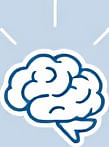Practical Note-Taking Methods to Reduce Cognitive Load
 by Marlene Keeling
by Marlene Keeling
Discover how effective note-taking methods can help ease mental overload, making daily tasks more manageable for students and professionals. Learn simple strategies to boost focus and productivity through organized note-taking.

In our busy lives, managing information can often feel overwhelming. Cognitive load refers to the amount of mental effort used in working memory. Effective note-taking methods serve as a key tool to lighten this burden by organizing thoughts and externalizing information.
One useful approach is the Cornell method. This technique divides notes into sections: a narrow left column for cues, a wider right column for main notes, and a summary at the bottom. By using this method, individuals can quickly review key points without sifting through everything. For students preparing for exams, the Cornell method streamlines study sessions and improves retention.
Another option is mind mapping. This visual method involves creating diagrams with a central idea and branching out to related concepts. Mind mapping helps in connecting ideas and seeing the bigger picture. Professionals in meetings might find that mind mapping reduces the strain of holding multiple thoughts at once.
Digital tools also play a significant role in offloading cognitive load. Apps like Evernote or OneNote allow for easy organization, searchability, and synchronization across devices. By digitizing notes, users can avoid the mental effort of manual filing. For instance, a professional juggling projects could use these tools to tag and categorize information, freeing up mental space for creative work.
Benefits of Structured Note-Taking
Structured note-taking not only organizes information but also enhances recall. When notes are clear and categorized, the brain doesn't have to work as hard to retrieve details. This is especially helpful for anyone dealing with high volumes of data.
Consider the role of abbreviations and symbols in notes. Using shorthand can speed up the process and reduce the cognitive effort required during lectures or meetings. For example, symbols like arrows for relationships or stars for important points make scanning easier. Abbreviations in notes can turn a chaotic session into a streamlined one.
Regular review is another essential practice. Setting aside time to go over notes reinforces learning and prevents information overload. This habit ensures that knowledge is consolidated, allowing for better long-term retention without constant mental strain.
Tips for Everyday Application
To incorporate these methods into daily life, start small. Begin with one technique, such as the Cornell method, during a single class or meeting. Over time, build a routine that fits your schedule.
For students, applying note-taking during lectures can make studying less taxing. Write down main ideas first, then add details later. This approach minimizes the immediate cognitive load and allows for deeper processing afterward.
Professionals can adapt these strategies in work settings. During brainstorming sessions, use mind mapping to capture ideas visually. This not only aids in idea generation but also makes follow-up easier, reducing the mental clutter that builds up over the day.
Don't overlook the importance of environment. A quiet space with minimal distractions supports effective note-taking. Combined with these methods, it creates an optimal setup for offloading cognitive load.
Exploring Variations
Variations of note-taking can cater to different preferences. The outline method, for example, uses bullet points and subpoints to structure information hierarchically. This is ideal for linear thinkers who prefer order. By organizing content this way, individuals can quickly grasp hierarchies without extra mental effort.
Audio recording combined with notes offers another layer of support. While listening back, jot down key phrases to reinforce memory. This hybrid approach is particularly useful for those who process information aurally, helping to distribute cognitive demands.
In practice, combining methods often yields the best results. A student might use mind mapping for complex topics and the Cornell method for straightforward ones. This flexibility ensures that cognitive load is managed effectively across various scenarios.
Long-Term Gains
Over time, consistent use of these note-taking methods leads to improved productivity and reduced stress. By offloading routine mental tasks, individuals gain more capacity for problem-solving and innovation. For anyone interested in cognitive science, experimenting with these techniques provides practical insights into how the mind works.
Ultimately, the goal is to make daily life more efficient. Whether you're a student aiming for better grades or a professional seeking work-life balance, these strategies offer a pathway to clearer thinking and enhanced focus.
